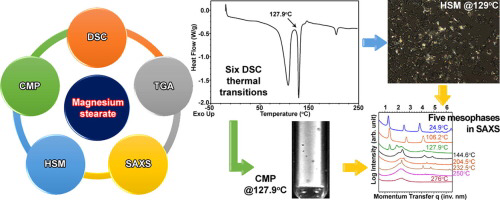- Home
- Blog
- News
- Basics
- Sources
- Agencies, Regulatory & Organisations
- CERSI Excipients Browser
- Excipient Report
- Excipient DMF List
- EXCiPACT Certified Companies
- Excipient Documentation
- Excipient EINECS Numbers
- Excipient E-Numbers
- FDA Inactive Ingredient List
- FDA GRAS Substances (SCOGS) Database
- IPEC Americas
- USP - U.S. Pharmacopeia
- Definitions
- Whitepapers / Publications
- Supplier
- Services
- Media
- Events
- 1st pharmaexcipients Poster Award
- Event Calendar
- Events featured by pharma-excipients
- 4th Annual Formulation & Drug Delivery Congress
- DDF Summit
- ExcipientFest Americas
- ExcipientFest Asia
- Global CompliancePanel
- International Conference and Exhibition on Pharmaceutics & Novel Drug Delivery Systems
- Formulation & Drug Delivery USA Congress
- Laboratory Medicine 2018
- Making Pharmaceuticals Europe
- Making Pharmaceuticals Exhibition
- Pharma Integrates
- PharmaExcipients China @CPhI China
- TTC Technology Training Center
- Jobs
- Online Sourcing
- Contact
08. July 2018
Magnesium stearate (MgSt) is the most commonly used excipient for oral solid dosage forms, yet there is significant commercial physicochemical variability that can lead to variable performance of critical product attributes. Differential scanning calorimetry (DSC) is often used as a quality control tool to characterize MgSt, but little data is available regarding the physicochemical relevance for the DSC thermograms. The main aim of this study was to decipher MgSt’s complex thermotropic...
05. April 2017
Abstract We investigated the effectiveness of using Carr’s flowability index (FI) and practical angle of internal friction (Φ) as indexes for setting the target Mg-St mixing time needed for preparing tablets with the target physical properties. We used FI as a measure of flowability under non-loaded conditions, and Φ as a measure of flowability under loaded conditions for pharmaceutical powders undergoing direct compression with varying concentrations of Mg-St and mixing times. We evaluated...
30. January 2017
Abstract: This work is the continuation of a study focused on establishing relations between surface thermodynamic properties and in vitro release mechanisms using a model drug (ampicillin trihydrate), besides analyzing the granulometric properties of new polymeric materials and thus establishing the potential to be used in the pharmaceutical field as modified delivery excipients. To do this, we used copolymeric materials derived from maleic anhydride with decreasing polarity corresponding to...
04. September 2016
Abstract: This paper focuses on the characterization of the tabletting process and analysis one of the most common pharmaceutical excipients MCC Avicel PH102 by Heckel, Kawakita, Cooper-Eaton and Adams compaction equations. Experimental material was determined by measuring its parameters as particle size distribution, angle of wall friction and flow properties and for more detailed characteristics of the material particles, microscopy images of the powder before and after compressing were...
15. August 2016
Abstract The methods used for flow characterization of a powder mass include the angle of repose (AOR), Carr index (CI), and powder flow tester (PFT). The use of nanosilica as a flow modifier (glidant) is very common in industry. This study aims to compare the glidant effect of hydrophobic and hydrophilic silica on a poorly flowable active pharmaceutical ingredient (ibuprofen) by different flow characterization techniques. Different percentages (0.5, 1.0, and 2.0 wt%) of both types of mixed...
08. May 2016
Objective: To investigate the modulation of the wettability of excipients by types of surfactants and its impacts on the disintegration of tablets and drug release. Materials and methods: The critical micelle concentration (CMC) of surfactants including sodium dodecyl sulfate (SDS), sodium dodecyl benzene sulfonate (SDBS), dodecyl trimethyl ammonium bromide (DTAB), cetyltrimethyl ammonium bromide (CTAB) and polysorbate (Tween-20 and Tween-80) was obtained using the platinum ring method. Contact...
05. March 2016
Solubility parameters of HPMCAS have not yet been investigated intensively. On this account total and three dimensional solubility parameters of HPMCAS were determined by using different experimental as well as computational methods. In addition, solubility properties of HPMCAS in a huge number of solvents were tested and a Teas plot for HPMCAS was created. The total solubility parameter of about 24 MPa0.5 was confirmed by various procedures and compared with values of plasticizers. 20 common...

